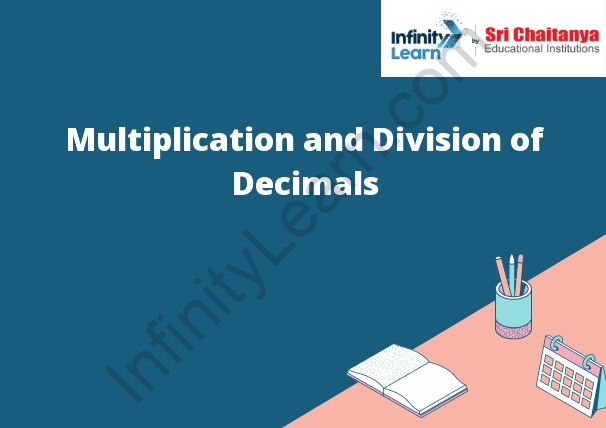Table of Contents
Explain in Detail :Multiplication Of Decimals:
To multiply two decimals, line the decimals up on top of each other, and place a dot between them. Next, multiply the numbers in the top row, and write the answer in the bottom row. Finally, move the decimal point in the bottom row the number of places indicated by the number in the top row. Multiplication and Division of Decimals.
For example, to multiply 0.5 by 0.8, line the decimals up on top of each other, and place a dot between them. Next, multiply the numbers in the top row, 0.5 times 0.8, and write the answer, 0.4, in the bottom row. Finally, move the decimal point in the bottom row the number of places indicated by the number in the top row, four places to the right, to get the answer, 4.0.

Division Of Decimals
A decimal is a number that is written using a decimal point. The number after the decimal point is tenths, hundredths, thousandths, etc. of the number to the left of the decimal point.
For example, the decimal .6 can be thought of as the number 6 divided by 10. The number 6 is divided by 10 three times. The first time, the number 6 is divided by 10 and the result is 0.6. The second time, the number 6 is divided by 10 and the result is 0.6. The third time, the number 6 is divided by 10 and the result is 0.0. The final result is .6.
Another example is the decimal .14141414. The number 14141414 is divided by 10000 three times. The first time, the number 14141414 is divided by 10000 and the result is 1.4141. The second time, the number 14141414 is divided by 10000 and the result is 1.4141. The third time, the number 14141414 is divided by 10000 and the result is 0.1414. The final result is .14141414.
Multiplying Decimals
Multiplying decimals is the same as multiplying whole numbers except for the placement of the decimal point in the answer. When you multiply decimals, the decimal point is placed in the product so that the number of decimal places in the product is the sum of the decimal places in the factors.
Let’s compare two multiplication problems that look similar: 214 · 36, and 21.4 · 3.6.
| 214
x 36 1284 6420 7,704 |
21.4
x 3.6 1284 6420 77.04 |
Notice how the digits in the two solutions are exactly the same – the multiplication does not change at all. The difference lies in the placement of the decimal point in the final answers: 214 · 36 = 7,704, and 21.4 · 3.6 = 77.04.
To find out where to put the decimal point in a decimal multiplication problem, count the total number of decimal places in each of the factors.
21.4 the first factor has one decimal place
3.6 the second factor has one decimal place
77.04 the product will have 1 + 1 = 2 decimal places
Note that the decimal points do not have to be aligned as for addition and subtraction.
Dividing Decimals
To divide decimals, you will once again apply the methods you use for dividing whole numbers. Look at the two problems below. How are the methods similar?
Notice that the division occurs in the same way—the only difference is the placement of the decimal point in the quotient.
| Example | |||
| Problem | 18.32 ÷ 8 = ? | ||
| ________
8 ) 1 8.3 2
|
Set up the problem. | ||
| 2.2 9
8 ) 1 8.3 2 -1 6 2 3 -1 6 7 2 – 7 2 0 |
Divide. | ||
| 2.2 9
8 ) 1 8.3 2
|
|||





